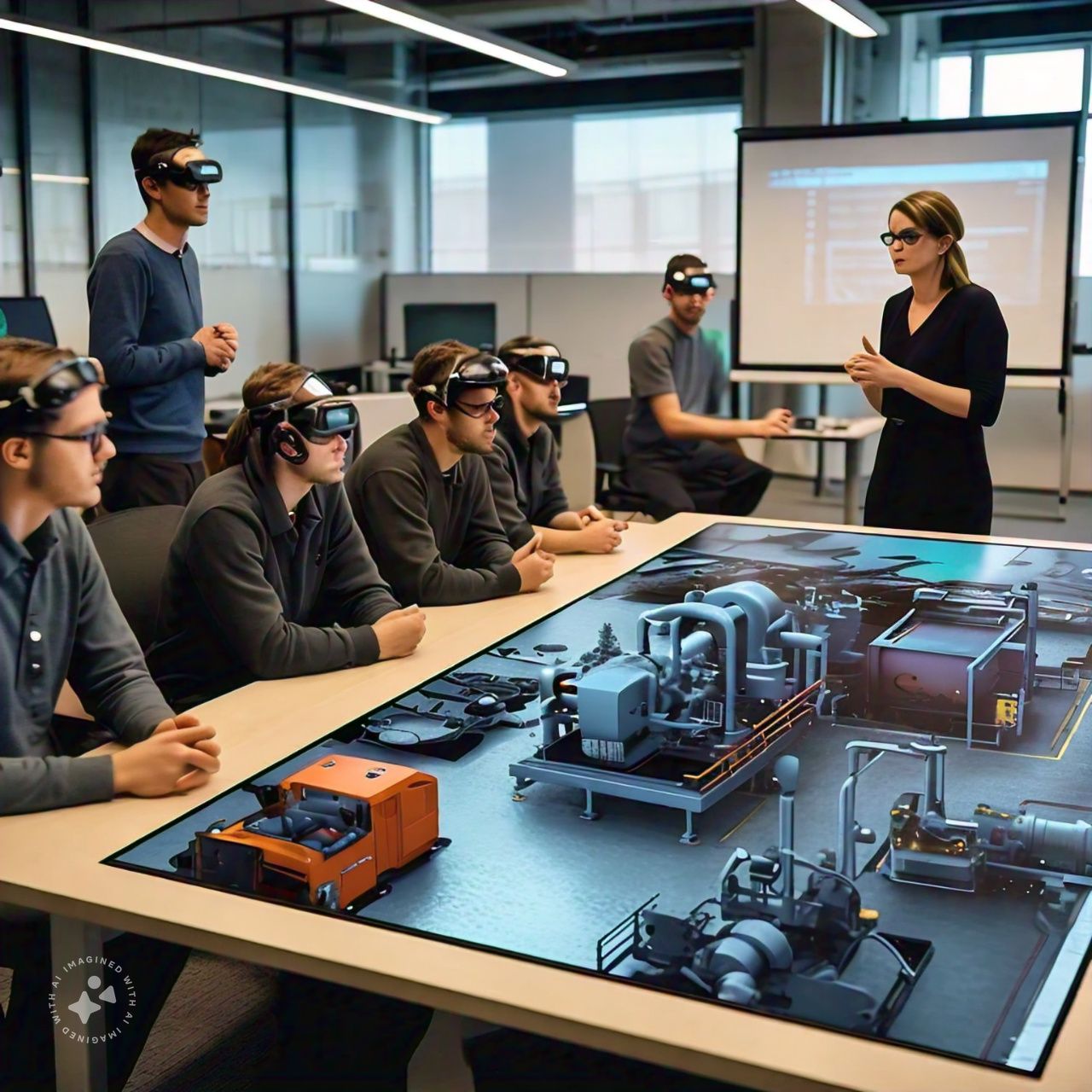Introduction
In today’s fast-paced industrial landscape, staying competitive means constantly upgrading skills and knowledge. Traditional training methods are often time-consuming, costly, and limited in scope. Enter Augmented Reality (AR): a cutting-edge technology revolutionizing industrial training. AR bridges the gap between theoretical knowledge and practical application, enabling workers to learn more effectively and efficiently. Let’s dive into how AR is reshaping industrial training with real-world examples and success stories.
What is Augmented Reality (AR)?
AR is a technology that overlays digital information—such as images, text, and 3D models—onto the real world using devices like smartphones, tablets, or AR glasses. Unlike virtual reality (VR), which immerses users in a completely digital environment, AR enhances the real-world setting by adding interactive elements.
Key Components of AR
- Hardware: Devices like Microsoft HoloLens, Magic Leap, or mobile devices.
- Software: Platforms such as Vuforia, ARKit, or ARCore.
- Content: Digital overlays, such as instructions, simulations, or 3D objects.
AR’s ability to create immersive, context-rich environments makes it ideal for industrial training applications. Workers can visualize machinery components, follow step-by-step procedures, and practice skills in a risk-free setting.

AR in Industrial Training: Case Studies and Success Stories
Benefits of AR in Industrial Training
Implementing AR in industrial training programs offers several key advantages:
1. Enhanced Learning Retention
Studies show that learning retention increases significantly with interactive, visual training. AR allows trainees to engage with content dynamically, ensuring better understanding and long-term retention.
2. Real-Time Guidance
Workers can access real-time instructions and troubleshooting tips directly through AR devices, reducing downtime and errors on the job.
3. Safe Training Environment
AR simulations let trainees practice complex or dangerous tasks without physical risks. For example, a trainee can learn to operate heavy machinery virtually before handling real equipment.
4. Cost and Time Efficiency
AR reduces the need for physical training materials, travel, and instructor-led sessions, cutting costs and saving time for companies.
5. Scalability
AR training modules can be easily updated and distributed across multiple locations, ensuring uniform training standards worldwide.
Case Studies in AR for Industrial Training
1. Boeing’s AR-Enhanced Assembly Training
Boeing uses AR to train workers in aircraft wiring assembly. Trainees view detailed, step-by-step instructions through AR glasses, improving accuracy by 25% and reducing training time by 35%.
2. BMW’s Maintenance Training
BMW integrates AR into its maintenance programs, allowing technicians to visualize engine components and receive real-time diagnostics. This approach has significantly reduced repair times and enhanced workforce efficiency.
3. Siemens’ Virtual Plant Simulations
Siemens employs AR to simulate plant operations and train employees in critical decision-making scenarios. Workers can explore various “what-if” situations in a risk-free environment, improving operational readiness.
4. Honeywell’s Field Service Training
Honeywell leverages AR for field service training. Technicians use AR headsets to overlay schematics and troubleshooting guides onto equipment, reducing errors and increasing productivity.
Challenges and Solutions in AR Adoption
While AR offers immense potential, its adoption in industrial training comes with challenges:
1. High Initial Costs
Challenge: AR hardware and software investments can be expensive. Solution: Companies can start small with mobile AR solutions and gradually scale up as ROI becomes evident.
2. Technical Barriers
Challenge: Integrating AR with existing systems can be complex. Solution: Partnering with experienced AR vendors and leveraging cloud-based platforms simplifies integration.
3. Resistance to Change
Challenge: Employees may be hesitant to adopt new technology. Solution: Provide hands-on demonstrations and emphasize AR’s benefits to foster acceptance.
4. Content Creation Challenges
Challenge: Developing high-quality AR content can be time-consuming. Solution: Utilize AI tools and 3D modeling software to streamline content creation.
Future of AR in Industrial Training
The future of AR in industrial training is bright, with advancements in AI, 5G, and IoT driving new possibilities:
- AI-Powered AR: Adaptive learning experiences tailored to individual needs.
- Remote Collaboration: Workers can connect with experts in real time through AR devices for guidance.
- Wearable Tech: Enhanced AR glasses and haptic feedback devices will provide even more immersive experiences.
- Integration with IoT: AR can leverage IoT data to offer real-time operational insights.
As AR technology continues to evolve, industries will unlock even greater training efficiencies and workforce empowerment.
Conclusion
Augmented Reality (AR) is revolutionizing industrial training, making it more interactive, efficient, and safe. From assembly lines to maintenance operations, AR is equipping workers with the skills they need to excel in their roles.















Leave a Reply